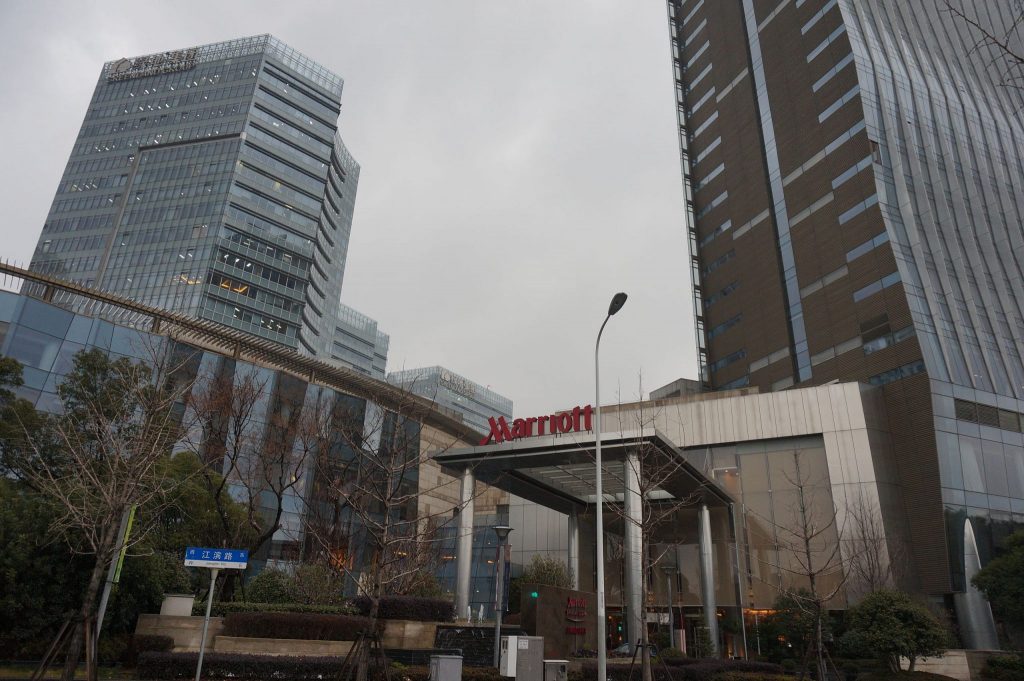Skift Take
Marriott's bigger portfolio in greater China than its competitors delivered the company somewhat of a financial win. But don't expect everything to return to normal on the rebound: Marriott learned how to run hotels with fewer employees during the crisis, and that's likely to be the new status quo.
Marriott reported Monday one of the strongest financial performances by a major hotel company last quarter, and it largely comes down to the company’s nearly full recovery in China.
While mainland China dealt with a winter surge of new cases and lockdowns early in the first quarter, the region quickly rebounded once those restrictions were lifted. Marriott reported occupancy for its Mainland China portfolio averaged 66 percent in March, roughly back to pre-pandemic levels.
The rebound in China coupled with accelerating vaccine distribution in the U.S. drove the company to an $11 million first quarter loss — a financial win given Marriott’s competitors like Hilton and Hyatt still posted more than $100 million losses each.
“Seeing these trends in Mainland China running near pre-pandemic levels gives us confidence in strong full recoveries across all customer segments in other regions as conditions improve,” Marriott CEO Tony Capuano said on a Monday investor call.
China leads the world in terms of a travel recovery from the pandemic. Revenue per available room — the hotel industry’s key performance metric — was only down by roughly 15 percent last week from 2019 levels, the best performance seen since the beginning of the pandemic, according to STR.
Marriott’s leisure business in China is now above pre-pandemic levels, and even corporate travel in March surpassed 2019 levels by 5 percent, Capuano said.
Analysts generally expected Marriott, which has 405 hotels in Greater China, to outperform some of its competitors due to its slightly greater presence in the region. Hilton currently has 332 hotels in Greater China but a development pipeline of 602 additional properties.
Marriott’s strongest-performing hotels, like many of its competitors, now are generally in areas with accelerated vaccine distribution like the U.S., the UAE, and Qatar as well as looser travel restrictions like Mexico, Capuano said.
But rising cases in India and Japan as well as travel restrictions across Europe offset the recoveries in other parts of the world.
“While some regions will recover faster than others, based on the progress we’ve seen to date, I am confident that it is not a question of if demand will return to pre-Covid levels,” Capuano said. “It is really only a question of when.”
A Growth Story
As expected, Marriott pointed to two of its relatively newer offerings for examples of growth through the pandemic.
The company’s Homes & Villas vacation rental platform now has about 30,000 listings, up about 5,000 listings from last quarter. But the company once again emphasized Homes & Villas is still a small part of the company: “While [Homes & Villas] does not have a material impact on our financials, is complimentary to our portfolio of hotel brands,” Capuano said.
Marriott introduced technology upgrades to the platform in recent weeks and even has job postings indicating plans to integrate Homes & Villas into its reservations system, leading several analysts to believe its days of limited “material impact” to be numbered.
Capuano also highlighted Marriott’s deal earlier in the year to bring 19 all-inclusive resorts, with about 7,000 combined rooms, into the company’s network. All-inclusive resorts are a newer business for Marriott, but the deal positions the company to be one of the 10 largest operators in the sector, Capuano said.
One growth setback last year was Service Properties Trust, or SVC — a Boston-based lodging trust — cutting ties with Marriott on 122 hotels and rebranding those properties under Sonesta brands. SVC has a 34 percent stake in Sonesta. Eighty-eight of those hotels left the system in the first quarter of this year, Capuano said.
But he noted these were mostly older, limited-service hotels without amenities like a restaurant and that Marriott was already in discussions for deals with newer properties in about 75 percent of the impacted markets.
Despite the SVC loss, Marriott still expects to see as much as 3.5 percent net rooms growth by the end of this year.
The Pandemic Labor and Operations Legacy
Staffing shortages were a hot topic across all first quarter earnings calls, and Marriott indicated there will likely be structural shifts in how hotels are operated to navigate a more limited workforce.
Analysts expect hotel owners to increase wages heading into the summer in order to compete for workers in what many see as an extraordinarily tight hospitality labor market. While this has some fearful of soaring labor costs at a time when many hotel owners have limited cash on hand, Marriott leaders had a different take.
“It has typically been the case that, when you have inflation on wages, you often also have inflation on [daily rates], which helps to offset that,” said Leeny Oberg, Marriott’s chief financial officer.
Financial breakeven points for hotels are much lower today than they were before the pandemic — unfortunately, this was a trend that came at the cost of so many worker layoffs. Along with layoffs, hotels largely cut daily housekeeping services or offered them on a by-request-only basis. Contactless features like mobile check-in and digital room keys also helped cut costs.
While Marriott leaders didn’t provide specifics, it appears many of these changes are here to stay.
“Many of our initiatives to streamline operations and improve productivity, such as more efficient management staffing levels at many of our managed hotels will remain in place after the pandemic and should help offset wage inflation,” Oberg said.
Have a confidential tip for Skift? Get in touch
Tags: coronavirus, coronavirus recovery, marriott
Photo credit: Leisure and business travel occupancies outperformed pre-pandemic levels in March in China, Marriott reported Monday. Livelikerw / Wikimedia
